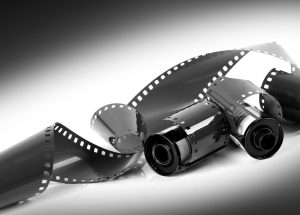
The fascinating world of analog. In a world taken over by digital technology, analog photography seems to have become a rarity. Nevertheless, there is still a fiery fascination among photographers and art lovers for the uniqueness of analog photography. While the digital world brings speed, convenience and immediacy, some valuable qualities seem to be lost in the mass of pixels and megabytes. I myself started with this technique already in primary school, where I was first introduced to photography and developing images in the darkroom. There is something magical about watching faint outlines on paper slowly becoming a painting. Analog photographers, faithful to their old cameras and films, insist that analog photography has something that digital cannot offer. I think the same, although over the years I've lost that feeling because digital photography has become incomparably more comfortable and we've gotten used to a fast pace where everything has to be fast or even instant. Especially when it comes to commercial photography. There, analog technology lost the battle, but it has its own niche, like vinyl records. Let's see how it goes.
So what is this charm of the analog world that still persists in the age of the digital revolution?
First of all, the aesthetic value of analog photography is priceless. Its warmth of colors, rich texture and inimitable grain effects offered by the film are unique. Light captured on film creates a kind of magic that is difficult to achieve through digital processing. Photographers appreciate this authenticity and uniqueness that analog creation brings. In addition, it is easier to say that it is unique for a photo developed in a "pedestrian" way. Like comparing offset printing and fine art graphics where copies are limited. A photograph can only be produced by someone who owns the negative, which is significantly different than a file created by a digital person, which can be sent around freely and anyone can print their own copy.
Second, the process of creating analog photography is an art in itself. From choosing the right film, manually setting parameters on the camera, to developing and printing, every step is an opportunity to express creativity and technical skill. Manual film development and the darkroom have become sanctuaries where creators express themselves artistically and shape their visions.
Additionally, using an analog camera is a great way to improve your understanding of the basics of photography. When it is not possible to view the shot immediately, photographers become more attentive to lighting, composition and other elements that affect the final result. This leads to a more deliberate approach to creating recordings and developing your own style. Last but not least, the limitations brought about by the use of analog photography encourage creativity. The limited number of shots on film, manual setting of parameters and the unpredictability of the result invite photographers to explore and innovate. These challenges put photographers in a position where they have to use their skills and creativity to achieve the desired results.
Analogue photography is also a valuable part of the history of photography. With its rich heritage and tradition, it carries with it respect for the past. Many photographers value and preserve the traditional processes and techniques created by their predecessors. Through the use of analog cameras and films, this knowledge and experience is passed on to future generations.
Although digital photography has become dominant in the modern world, analog photography is still persistently maintained. Its aesthetic value, artistic expressions, educational potential, historical significance and the challenges it brings keep it as an important and valued form of art and creation. Through the eyes of an analog photographer, the world still appears in a special, unrepeatable shade of light that only a good old film camera can capture.




